Sri Lanka, a tropical paradise in South Asia, has found itself mired in a challenging economic crisis that has captured global attention. The extremity has been caused by misruled government finances and ill-timed duty cuts, besides the impact of the COVID-19 pandemic. Another reason for the crisis in Sri Lanka was the government ordering the farmers to start organic farming, resulting in sellers not meeting the people’s demands due to the decreased supply, creating inflation. With mounting debt, fiscal deficits, and macroeconomic imbalances, the country has been struggling with a complex set of issues that threaten its economic stability and social well-being, leading to a deepening crisis. This article aims to shed light on the origins and consequences of Sri Lanka’s crisis, exploring the key factors that have contributed to its deepening woes.
Status of the economy of Sri Lanka
The economic growth of Sri Lanka slowed down to 1.8% in the fourth quarter of FY2021-22, with periodic growth of 3.7%. This is much lower than the estimated growth of 5% by the Central Bank of Sri Lanka. The country is left with foreign deposits of only around US$ 2.31 billion as of February 2022. Sri Lanka faced debt disbursements or payments of about US$ 4 billion throughout the rest of the time, indicating rising defaulting on debt. The US$ 4 billion debt includes a US$ 1 billion transnational autonomous bond that matures in July 2022. In the face of massive protests by citizens, President Gotabaya Rajapaksa resigned in June last year. Prime Minister Ranil Wickremesinghe became the acting president and declared a nationwide state of emergency across the country.
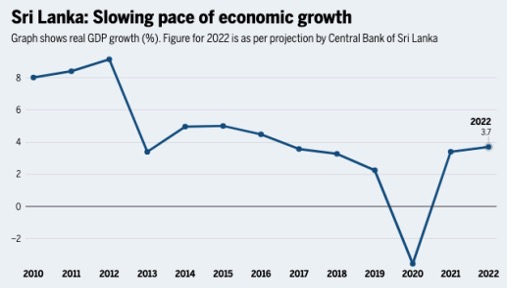
To understand what caused the economic crisis in Sri Lanka, let us understand what is meant by a debt crisis. A debt crisis of a country refers to a situation where a nation faces significant challenges in managing its debt obligations, leading to concerns about its ability to repay creditors and sustain its economic stability. It occurs when a country’s debt burden becomes unsustainable, surpassing its capacity to generate sufficient revenue or attract necessary financing to service the debt. It can arise due to various factors, including excessive borrowing, fiscal mismanagement, economic downturns, adverse external conditions, and a lack of sustainable economic growth.
The Accumulation of Debt
One of the primary drivers of Sri Lanka’s economic crisis is its mounting debt burden. Since 2010 Sri Lankan government’s Debt-to-GDP ratio gradually increased. As of September 2021, Sri Lanka’s total public debt stood at approximately USD 87 billion, which accounted for around 102% of its GDP. This high debt-to-GDP ratio has severely strained the country’s fiscal capacity and raised concerns about debt sustainability.
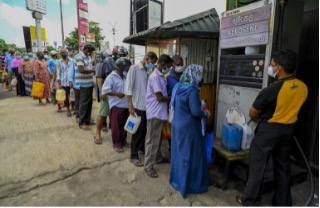
Factors Contributing to the Crisis
Fiscal Mismanagement: Inefficiencies in public expenditure, inadequate revenue generation, and fiscal deficits have contributed to the escalation of Sri Lanka’s debt burden. Insufficient control over government spending and a lack of fiscal discipline have exacerbated the crisis.
Excessive Borrowing: Sri Lanka heavily relied on external borrowing to finance infrastructure projects, meet budgetary requirements, and stimulate economic growth. This reliance on debt has led to an unsustainable level of indebtedness.
Adverse External Conditions: Global economic downturns, fluctuations in currency exchange rates, and rising oil prices have further intensified Sri Lanka’s debt crisis. These external factors have put additional strain on the country’s economy and debt-servicing capacity.
Macroeconomic Indicators
GDP Growth: Sri Lanka experienced a significant slowdown in GDP growth in recent years. In 2019, the economy grew by only 2.3%, followed by a contraction of 3.6% in 2020 due to the COVID-19 pandemic. However, there was a modest recovery in 2021, with a growth rate of 3.3%.
Inflation: Sri Lanka has struggled with high inflation rates, which erode purchasing power and negatively impact living standards. In 2021, the inflation rate averaged around 4.1%.
Foreign Exchange Reserves: Sri Lanka’s foreign exchange reserves have been under pressure, posing challenges for external debt servicing and import payments. As of September 2021, the reserves stood at approximately USD 3.7 billion, covering only around 2.6 months of imports.
Impact on the Exchange Rate
The crisis has significantly affected Sri Lanka’s exchange rate, leading to the depreciation of the currency. From 2019 to 2021, the Sri Lankan Rupee (LKR) depreciated against major currencies such as the US Dollar and Euro. The devaluation of the currency has implications for imports, inflation, and the cost of servicing foreign debt.
Debt Repayment Challenges
Sri Lanka has faced challenges in servicing its debt obligations. Sri Lanka’s debt obligations require a significant portion of its annual budget for debt servicing, leaving limited resources for crucial investments in infrastructure, social welfare, and economic development. In 2020, the country sought external assistance from the International Monetary Fund (IMF) around US$2.9 billion under the Rapid Financing Instrument (RFI) to mitigate the economic impact of the COVID-19 pandemic. Facing a huge deficit, President Gotabaya Rajapaksa reduced taxes in a doomed attempt to stimulate the economy.
But the move backfired, rather hitting government revenue which encouraged rating agencies to demote Sri Lanka to near-fail situations, meaning the country eventually lost access to overseas demands. Sri Lanka also had to fall back on its foreign exchange reserves to pay off government debt, shrinking its reserves from $6.9 billion in 2018 to $2.2 billion this time. This impacted the significance of fuel and energy, and other elements, which transferred prices soaring. Debt restructuring initiatives, including debt-to-equity swaps, have been pursued to alleviate immediate repayment pressures.
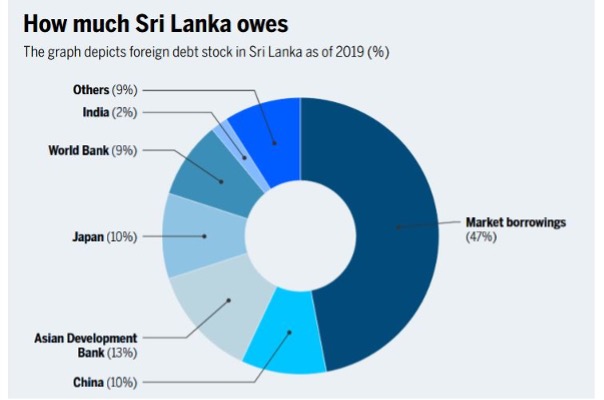
Impact on Economic Development
Reduced Public Investment: The need to allocate significant resources for debt repayment limits the government’s ability to invest in infrastructure development, education, healthcare, and other critical sectors necessary for long-term growth.
A decline in Foreign Direct Investment (FDI): The debt crisis, coupled with concerns about macroeconomic stability, has deterred foreign investors from committing significant FDI to Sri Lanka. This lack of investment hampers economic diversification and job creation.
Slower Economic Growth: The debt burden, combined with fiscal constraints, has contributed to slower economic growth rates in recent years. This hinders poverty reduction, income generation, and overall economic prosperity.
Impact on Social and Development Programs
The economic crisis has had far-reaching consequences on social welfare and development programs. Reducing public spending affected sectors such as healthcare, education, and infrastructure, potentially decreasing progress in these areas and exacerbating social inequalities. Countries like India, China, and Bangladesh have stepped in to help Sri Lanka to come out of the crisis.
Government Measures to Overcome the Economic Crisis
Fiscal Consolidation: Sri Lanka has implemented several measures to address fiscal imbalances and reduce the budget deficit. Some of the key initiatives include:
Rationalization of Expenditure: The government has focused on cutting unnecessary expenses and optimizing government programs to reduce the fiscal burden. In 2020, the government reduced non-essential expenditures by 25% to mitigate the economic impact of the COVID-19 pandemic.
Revenue Enhancement: Efforts have been made to enhance revenue generation through improved tax administration and broadening the tax base. In 2021, the Inland Revenue Department launched a digital tax administration system to enhance efficiency and transparency.
Public Sector Reforms: The government has taken steps to improve the efficiency and accountability of the public sector. This includes measures such as performance-based management, public sector salary reforms, and reducing waste and corruption.
Economic Performance: Despite facing various setbacks, Sri Lanka has showcased resilience and demonstrated signs of economic recovery. In 2019, the country achieved a GDP growth rate of 2.3%, and by 2021, the growth rate rebounded to 3.3%. These figures indicate a positive trajectory toward economic stability and recovery.
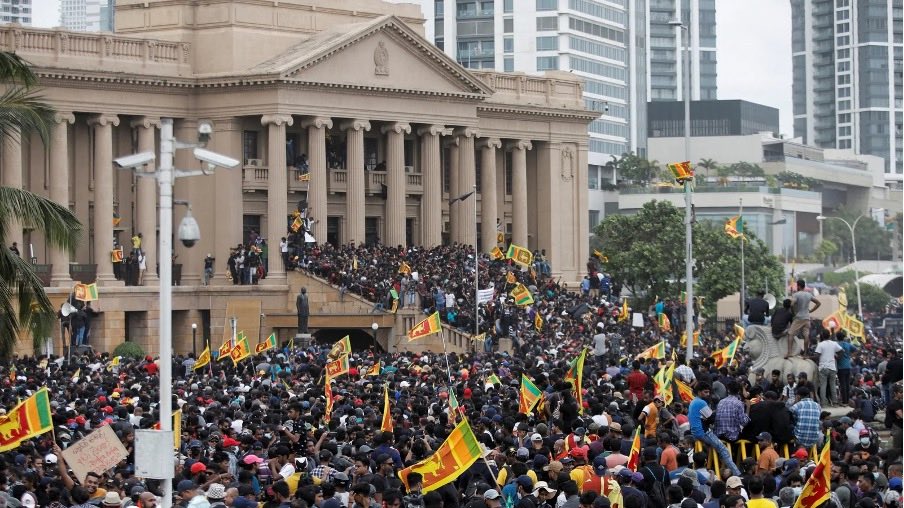
Debt Management and Restructuring: Debt restructuring refers to modifying the terms and conditions of existing debt agreements between a borrower (typically a country or a company) and its creditors. It is undertaken when the borrower is facing difficulties in meeting its debt obligations and seeks to alleviate the burden of debt repayment. The primary goal of debt restructuring is to create a more sustainable debt profile that allows the borrower to manage its debt obligations more effectively. To alleviate the burden of high debt levels and improve debt sustainability, Sri Lanka has undertaken debt management and restructuring initiatives. Key measures include:
Negotiating with Creditors: Sri Lanka has engaged in discussions with creditors to renegotiate the terms of existing debt. In 2021, the government successfully negotiated debt service moratoriums with several bilateral and multilateral lenders, providing temporary relief on debt repayments.
International Financial Assistance: Sri Lanka has sought assistance from international financial institutions to address its debt crisis. In 2020, the government secured a USD 1.5 billion currency swap facility with the Reserve Bank of India to bolster foreign exchange reserves and stabilize the economy.
Debt-to-Equity Swaps: Sri Lanka has explored debt-to-equity swap arrangements, where a portion of the debt is converted into equity in state-owned enterprises. This measure aims to reduce the debt burden and improve the financial health of these enterprises.
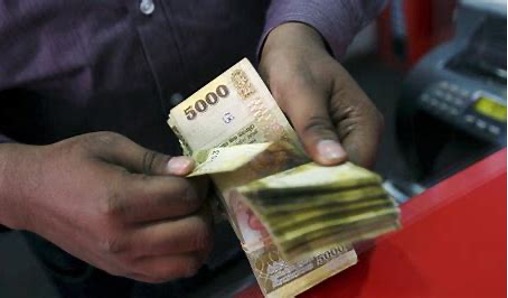
Sri Lanka’s central bank has devaluated the rupee by over 15%. It has set an exchange rate limit of 230 rupees per dollar compared to a limit of 200-203 that had prevailed since October 2021. Sri Lanka has asked China to restructure its debt disbursements to help navigate the fiscal extremity. The country is also in addresses with China for another US$ 2.5 billion in credit support. Sri Lanka has sought a new credit line of US$ 1 billion from India to import essential particulars after the Sri Lankan Finance Minister signed a US$ 1 billion credit line with New Delhi before this month. In addition to the credit lines, India extended a US$ 400 million currency exchange and a US$ 500 million credit line for fuel and energy purchases to Sri Lanka before this time.
Attracting Foreign Investments: Sri Lanka has implemented policies to attract foreign direct investment (FDI) to stimulate economic growth. Some of the measures taken include:
Improving Business Environment: The government has undertaken reforms to enhance the ease of doing business and attract investments. In 2020, Sri Lanka established the National Single Window system to streamline trade processes and reduce bureaucratic hurdles.
Special Economic Zones: Sri Lanka has established special economic zones (SEZs) to attract foreign investments. These zones offer favourable regulatory frameworks, infrastructure facilities, and tax incentives to encourage investments and promote export-oriented industries.
Investment Promotion: Sri Lanka has actively promoted itself as an investment destination through various initiatives. The Board of Investment of Sri Lanka provides facilitation services and incentives for foreign investors. The country has also participated in international investment forums to showcase investment opportunities.
In 2021, despite the challenges posed by the pandemic, Sri Lanka recorded a significant increase in FDI inflows, amounting to USD 1.6 billion.
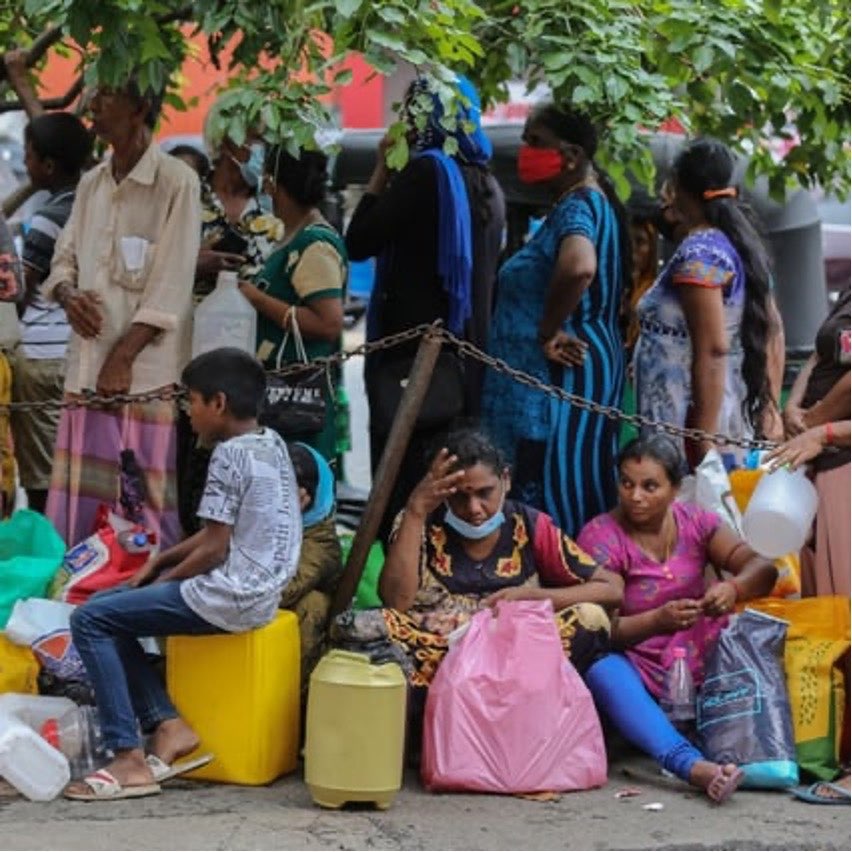
Export Diversification: To reduce the reliance on traditional sectors and expand into higher-value-added industries, Sri Lanka has focused on export diversification. Key measures include:
Sector Development: Sri Lanka has prioritized the development of sectors such as information technology (IT) services, high-quality manufacturing, and knowledge-based industries. The government has provided incentives, infrastructure development, and skills training to promote growth in these sectors.
Trade Agreements: Sri Lanka has pursued bilateral and regional trade agreements to expand market access for its products. Notable ones include the Sri Lanka-Singapore Free Trade Agreement and the Regional Comprehensive Economic Partnership (RCEP).
Market Promotion: The country has engaged in branding and marketing campaigns to promote its products globally. Sri Lanka has focused on sectors such as tea, apparel, spices, and tourism services to increase export earnings and enhance competitiveness.
In 2021, Sri Lanka’s total exports amounted to approximately USD 11 billion, with strong growth potential in non-traditional sectors.
Financial Sector Reforms: The stability of Sri Lanka’s financial sector is crucial for sustainable economic recovery. The government has implemented reforms to strengthen banking regulations, enhance risk management, and improve transparency. These measures aim to restore confidence in the financial system and facilitate access to credit for businesses and individuals.
Sri Lanka’s attempts to overcome its economic crisis have involved a comprehensive set of measures, focusing on fiscal consolidation, debt management, attracting foreign investments, and export diversification. These efforts, supported by reforms and policy initiatives, aim to restore fiscal stability, enhance debt sustainability, stimulate economic growth, and create a conducive environment for investment and trade. However, it is important to note that the effectiveness of these measures and their impact on overcoming economic crises may vary. Continuous monitoring, evaluation, and adaptation of policies are crucial for achieving long-term economic stability. While challenges remain, the commitment to implementing these measures provides a promising path toward economic recovery and long-term stability for Sri Lanka.
Written by – Anshika Gupta
Edited by – Alan Joseph Benny
